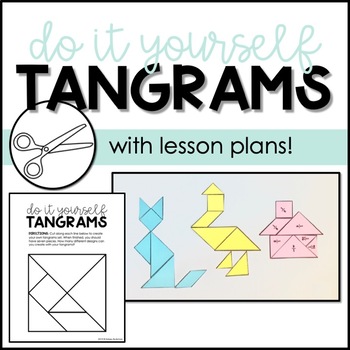DIY Tangrams Printable with Lesson Plans
- PDF
Description
Did you know you should familiarize your students with your math manipulatives just like you would your supply bins or other classroom routines? Students who might already have a poor relationship with math need to build positive connections with manipulatives. By using manipulatives in a creative, playful way at the beginning of the year, you are setting your students up for success down the road. The next time you take out your manipulatives for math-related purposes, your students will be prepared to have fun, not feel defeated.
This resource includes two styles of printable tangrams (one blank and one with the fractions labeled). It also includes two lesson descriptions: one to use as a beginning of the year introduction to manipulatives, and another designed for 4th grade students to use once you've taught equivalent fractions.
I hope you enjoy this product! As always, email me at teachinginmyrightmind@gmail.com if you have any questions or concerns.
xoxo,
Kelsey





